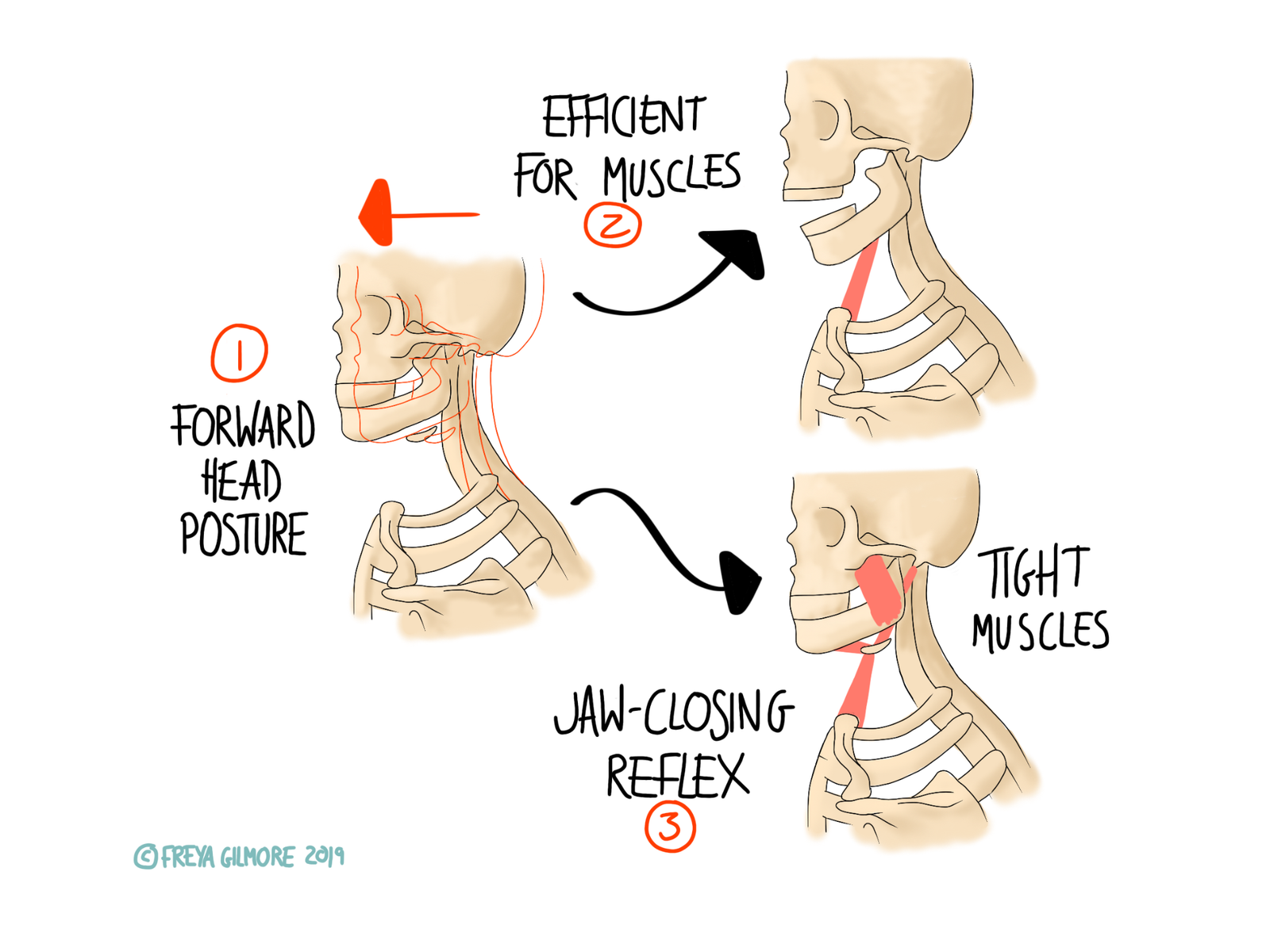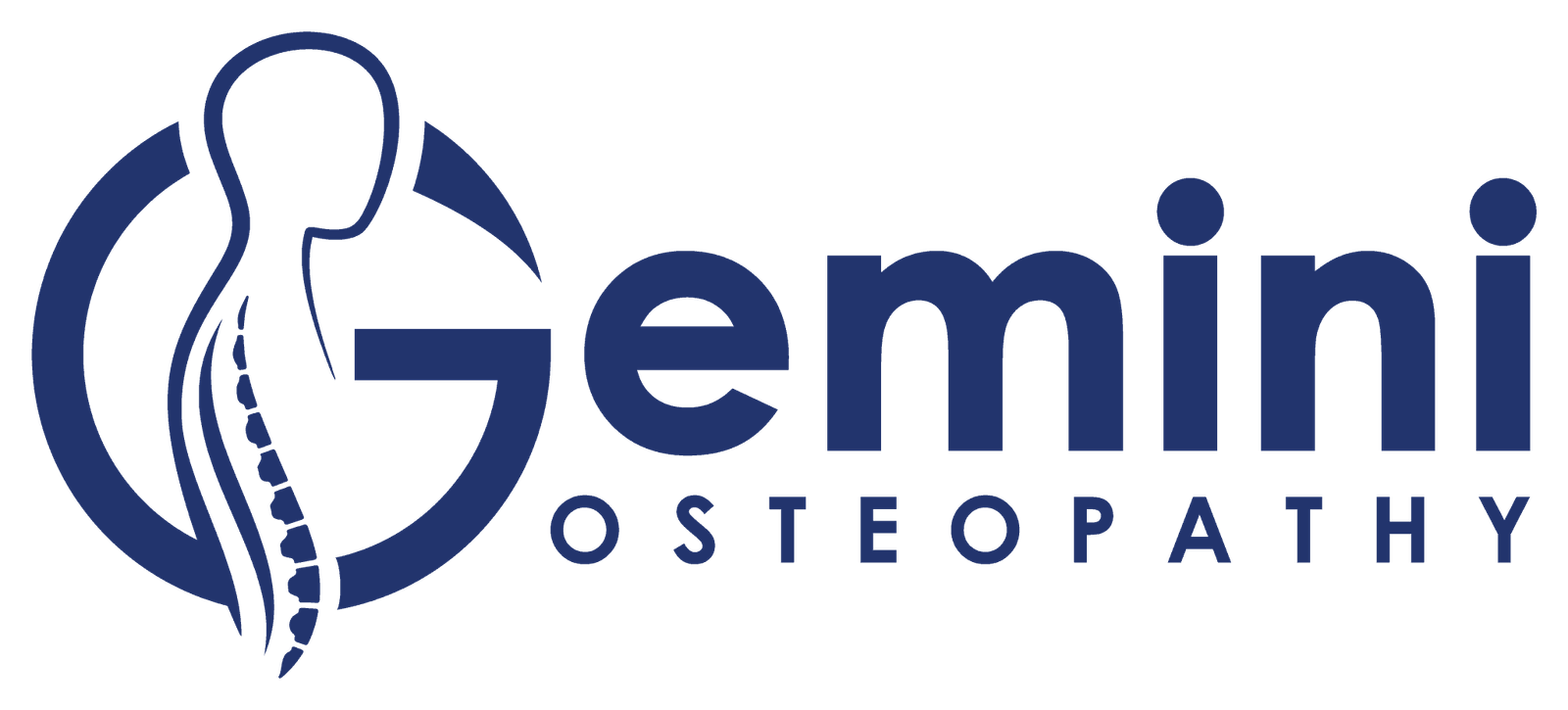The IT band is a band of tissue that runs down the side of the…

The Stomatognathic System
Stoma- means body and gnath- means jaw, so the stomatognathic system is simply the relationship between the jaw and rest of the body. The relationship is surprisingly deep and might answer some of your questions about lingering jaw pain headaches or shoulder issues.
The jaw is an unusual joint in that its movement is dictated by the other side, due to the connection at the front of the face. Its ranges of movement are also different to most joints: If you open your mouth slowly you’ll realise it’s not simply a hinge, but there’s a sliding motion involved as well . You’re also able to move your jaw from side to side. It’s very mobile. It gets a lot of movement all day every day from chewing, to talking, to absent minded behaviours, and it is supported by strong muscles including the masseter and buccinator.
Much of the relationship between the jaw and the rest of the body comes from subconscious reflexes that work together to keep your eyes and ears level. This means that any asymmetry that follow up from the body into the neck must be corrected before the top of the spine . That can put a lot of demand on the top of the spine and muscles nearby which intern can impact the jaw. If you are prone to headaches, a clicky jaw, or a feeling of imbalance, whether that’s from your teeth or your jaw itself, this might apply to you.
The Jaw-Closing Reflex
Modern posture often encourages us to bring our heads forward, as per looking intently at a computer screen all day. This puts a stretch on the front of the neck and should cause the jaw to hang open. However, whether or not you’re aware of it, your brain will aim to keep your mouth closed . If those anterior neck muscles are constantly on stretch, there will be a constant pull to open your mouth. The strong muscles of the cheek then have to engage to keep your mouth closed. If you find yourself grinding or just clenching your jaw, this might be one reason why.
Impact of Bruxism
Whether you’re grinding your teeth overnight when you’re unaware, or during the day, bruxism can have some local effects. Ongoing tension in the muscles of the cheek and into the temples can cause persistent headaches. In some cases you may even damage your teeth without realising, so it’s a good idea to work with a dentist alongside your osteopath to ensure that your teeth are well looked after. Some dentists will prescribe a gumshield-type device, sometimes known as a splint, to protect the teeth overnight when they are potentially most at risk. But ultimately, the best solution would be to prevent that grinding in the first place.
Management Strategies
As always, your osteopath will look at the body as a whole to work out where the original tension is coming from. If the problem has developed into an asymmetry at the base of the neck that has to be compensated for by the upper neck and jaw muscles, then the first place to treat may be the upper back. Often that imbalance will come from further down, so every case requires a comprehensive examination. At your first appointment, it would be helpful to have an idea of any patterns that you might have noticed with your symptoms. Are you in more or less discomfort at the end of the weekend versus the end of the working week? Do you find that long periods of driving help or hinder your progress? And if you go away do you feel better or worse having slept in a different bed?
Treatment will vary from person to person, but typically we are aiming to restore balance. This may be achieved through manipulation and mobilisation of joints throughout the body; and exercises to support this between appointments. Where there has been asymmetry for a long time, we expect to see tense muscles maintaining those patterns. So stretching and strengthening exercises to restore balance there will also be important in breaking the cycle.
Click here to make an appointment for your neck or jaw pain in Camberley




